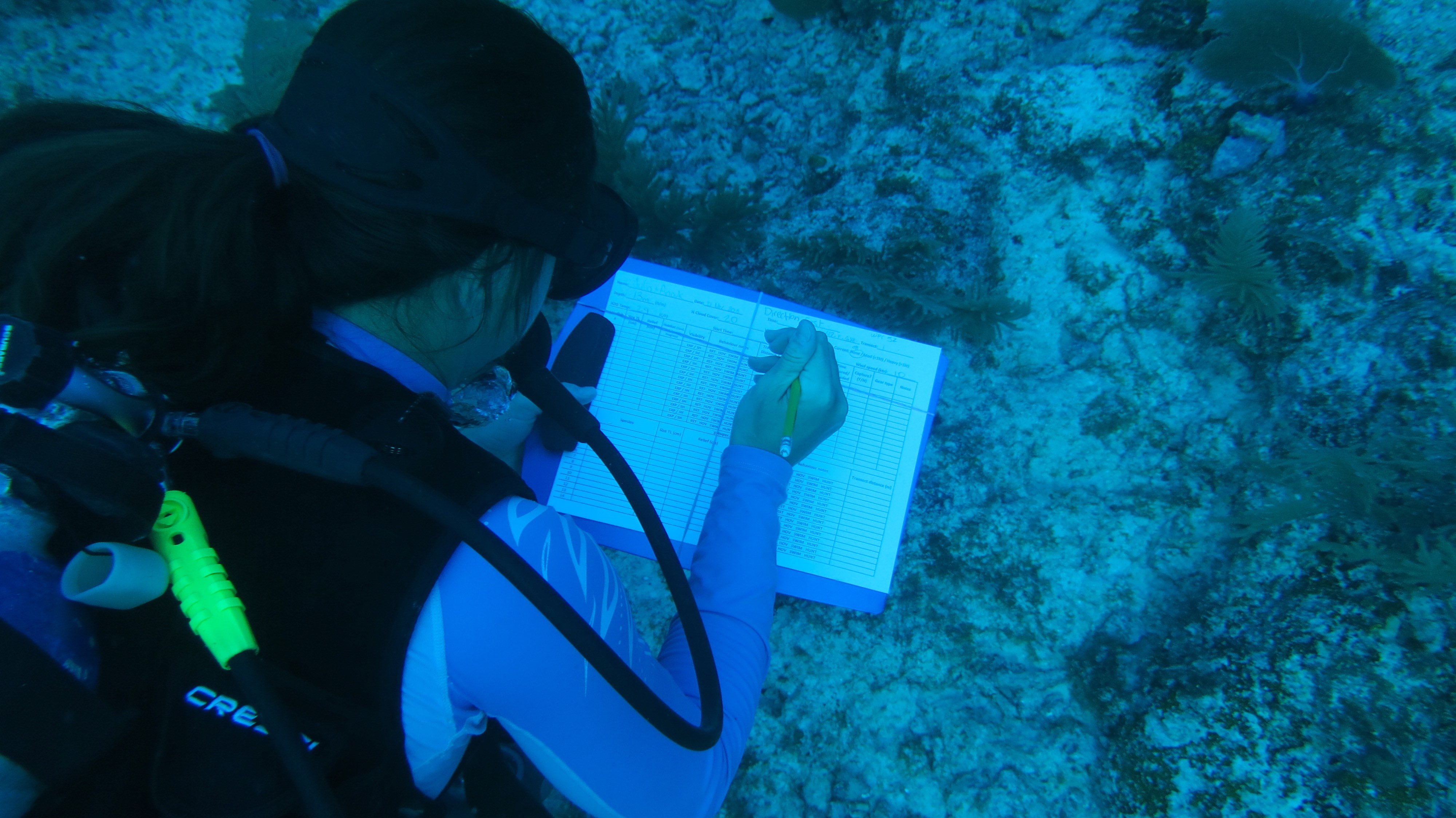Although eradication is no longer considered possible, lionfish population suppression allows native fish population recovery. With enormous variability in lionfish population density between reef locations, type and depth, a combination of commercial harvest, culling by SCUBA and deep-water traps is necessary to achieve the desired ecological outcomes.
In order to develop, implement and evaluate management interventions, it is essential to first determine the current status of lionfish populations. Due to their cryptic nature, the density of lionfish is often underestimated by traditional underwater visual census techniques; the Lionfish Focused Search method produces more accurate lionfish density estimates.
Coupled with prey fish population surveys, and following the method developed by Green et al. (2014: DOI 10.1890/13-0979.1), it is then possible to determine lionfish threshold densities – the site-specific density at which native fish populations can recover. This provides managers with a or management target, and the ability to calculate associated necessary catch target for each area to support long-term suppression.
Effective partnerships are vital. Without the involvement from stakeholders at all levels – including government departments, fishing communities, environmental organizations, tourist operators and academic experts – this process will not be successful. The involvement of relevant experts to provide training and/or determine site-specific lionfish threshold densities is needed.
Consistent, long-term monitoring using the LFS method is required to evaluate the impacts management interventions are having on lionfish populations.
